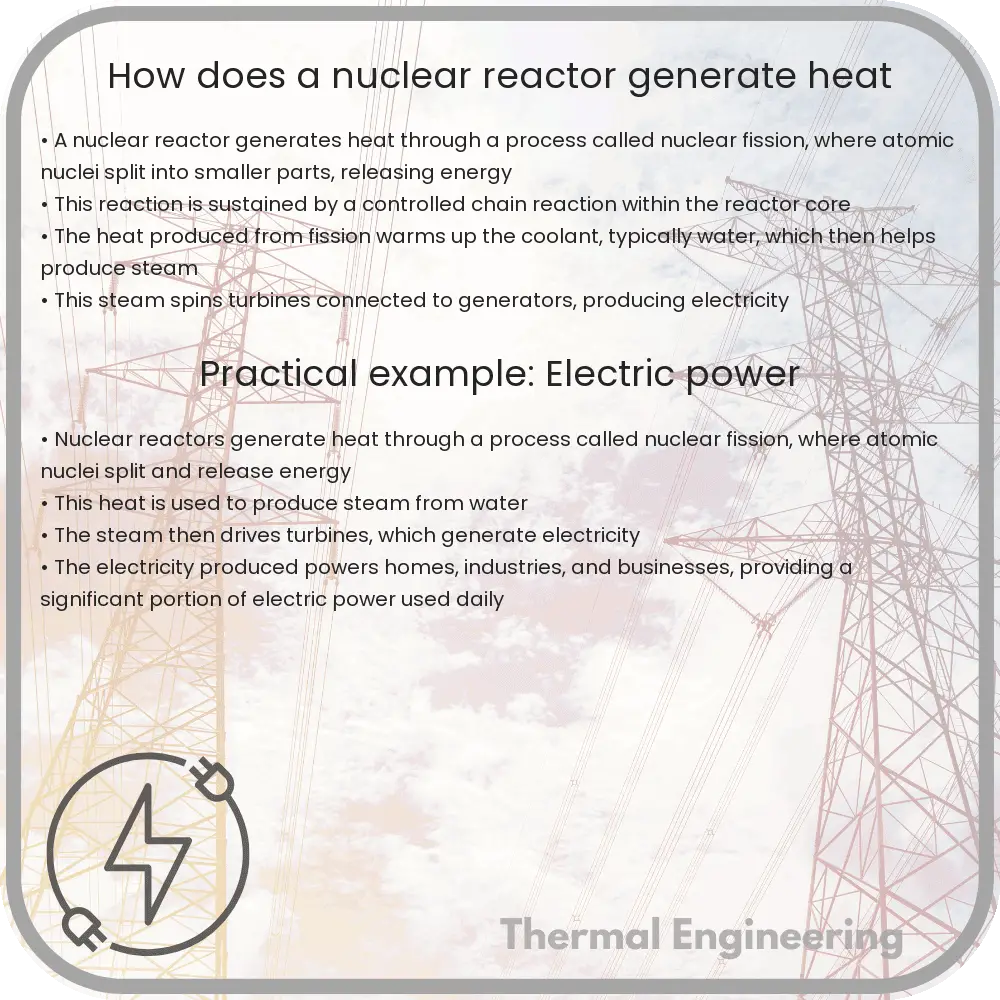Learn about heat generation in nuclear reactors, focusing on nuclear fission, control rods, and the transition from heat to electricity.

Understanding Heat Generation in Nuclear Reactors
Nuclear reactors are a powerhouse of energy generation, playing a critical role in meeting the world’s electricity demands. The core process at the heart of every nuclear reactor is the generation of heat. This heat is subsequently used to produce steam, which drives turbines to generate electricity. In this article, we will explore how nuclear reactors generate heat, focusing on the fundamental principles and processes involved.
Fission Process: The source of Heat
The process that leads to heat generation in a nuclear reactor is called nuclear fission. Nuclear fission occurs when the nucleus of an atom splits into smaller parts, often producing free neutrons and photons (in the form of gamma rays), and releasing a substantial amount of energy.
The Role of Uranium-235
Most nuclear reactors use the isotope Uranium-235 as fuel. The reason behind the choice of Uranium-235 lies in its ability to easily undergo fission. The process begins when a Uranium-235 nucleus captures a slow-moving neutron. This addition makes the Uranium nucleus unstable, causing it to split into two lighter nuclei along with additional neutrons and a significant release of energy.
Chain Reaction: Sustaining the Energy Release
The additional neutrons released during the fission of Uranium-235 can induce fission in other Uranium nuclei. This potential series of ongoing fission processes is termed a chain reaction. The ability to control this chain reaction is crucial for the safe and sustained operation of a nuclear reactor.
Control Rods: Regulating the Chain Reaction
To control the rate of fission and, consequently, the heat produced, nuclear reactors are equipped with control rods. These rods are made of materials that absorb neutrons, such as boron or cadmium. By adjusting the position of these control rods (inserting or retracting them from the reactor core), operators can control the number of free neutrons in the core, thus managing the fission rate and the heat output.
Heat to Electricity: The Role of Coolant
Once heat is generated through fission, it must be transferred from the reactor core to produce electricity. This is achieved by a coolant fluid that circulates through the core, absorbing the heat. The heated coolant then travels to a steam generator, where it transfers heat to water, turning it into steam. The high-pressure steam drives a turbine, which is connected to a generator. As the turbine blades turn, they rotate the generator, producing electricity.
Examples of Coolants
- Water: The most commonly used coolant, which can also act as a moderator to slow down neutrons.
- Molten Salt: Employed in some advanced reactors, offering higher operating temperatures and thermodynamic efficiency.
- Helium: Used in high-temperature gas-cooled reactors, helium is an inert gas that does not corrode reactor materials.
Conclusion
Nuclear reactors are complex systems designed to harness the energy released from nuclear fission. Through careful control of the fission process and effective heat transfer mechanisms, these reactors not only generate heat but do so in a way that can be sustainable and safe over long periods. The understanding of these processes is crucial for anyone involved in the field of nuclear energy or curious about how such significant power output can be safely managed.
This exploration into the functioning of nuclear reactors highlights the intricate balance between nuclear physics and engineering required to produce and manage the energy that powers vast parts of our world.